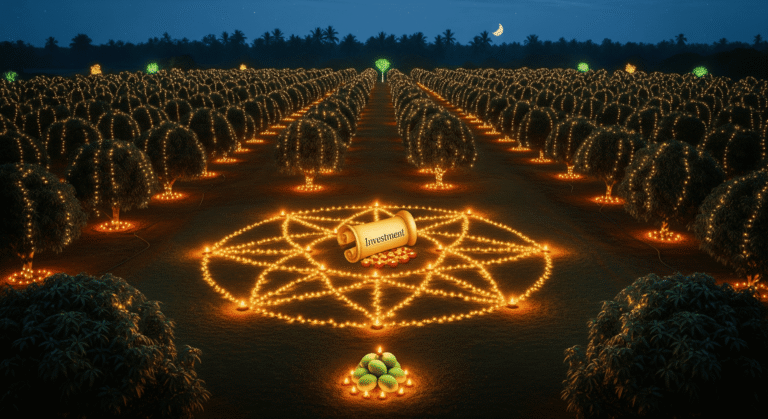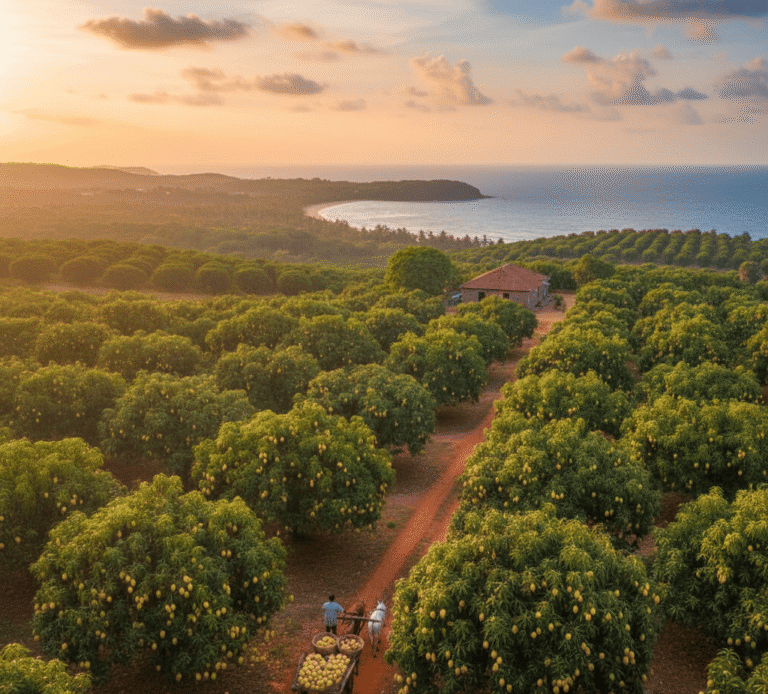The Kokan region, also known as the Konkan region, represents one of India’s most culturally rich yet underexplored destinations. This coastal strip stretches across western India, encompassing parts of Maharashtra, Goa, and Karnataka, offering travelers an authentic glimpse into centuries-old traditions, pristine beaches, and culinary delights that remain largely untouched by mass tourism.
The Geographic Marvel of Kokan
The Kokan region’s strategic location along India’s western coastline has shaped its unique identity over millennia. This coastal belt benefits from the Arabian Sea’s influence, creating a tropical climate that supports diverse ecosystems and agricultural practices. The region’s geography has fostered a maritime culture that continues to thrive today, with fishing communities maintaining traditional practices passed down through generations.
Culinary Heritage: A Gastronomic Adventure
Authentic Kokan Cuisine
The culinary landscape of Kokan stands as a testament to the region’s coastal heritage and cultural diversity. Local cuisine heavily emphasizes fresh seafood, with fishermen bringing daily catches from the Arabian Sea to local markets. The distinctive use of coconut and kokum—a sour fruit native to the region—creates flavors that distinguish Kokan cuisine from other Indian regional foods.
Traditional dishes that define the region include:
- Fish Curry: Prepared with coconut milk and regional spices, creating a perfect balance of heat and richness
- Sol Kadhi: A refreshing drink made from kokum and coconut milk, often served as a digestive
- Vada Pav: Though now popular throughout India, this spiced potato fritter sandwich originated in this region
The Alphonso Mango Legacy
Kokan holds the distinction of producing the world-renowned Alphonso mangoes, considered the finest variety globally. These mangoes, with their distinctive sweetness and creamy texture, have earned the region international recognition. The Alphonso mango season typically runs from April to June, attracting fruit enthusiasts from around the world.
Cultural Tapestry: Languages and Traditions
The Kokani Language
The linguistic heritage of Kokan reflects its diverse cultural influences. Kokani, the native language, represents a fascinating blend of Marathi, Arabic, and Persian elements, complete with its own unique script. This linguistic diversity mirrors the region’s history of trade and cultural exchange with various civilizations.
Traditional Arts and Crafts
The region maintains vibrant traditions in handicrafts, including:
- Pottery: Local artisans create functional and decorative ceramics using traditional techniques
- Weaving: Textile production maintains ancient patterns and methods
- Basket-making: Utilizing local materials to create practical and artistic items
Musical Heritage: The Sounds of Kokan
The folk music tradition of Kokan encompasses various genres, each serving specific cultural and social functions:
Traditional Folk Music Forms
Koli Geet represents the musical expression of fishing communities, characterized by lively rhythms that often accompany dance performances. These songs reflect the daily lives, struggles, and celebrations of coastal communities.
Gondhal serves as devotional music during religious festivals, featuring call-and-response singing patterns that create community participation in spiritual celebrations.
Lavani dance and music, while originating in Maharashtra, has found deep roots in Kokan culture, known for its energetic performances and rhythmic complexity.
Powada preserves historical narratives through heroic ballads that celebrate great warriors and significant events, maintaining oral history traditions.
Architectural Marvels and Historical Sites
Magnificent Forts
The region’s strategic importance is evident in its impressive fortifications:
Sindhudurg Fort: Built by the Maratha ruler Chhatrapati Shivaji, this sea fort demonstrates medieval military architecture and maritime defense strategies.
Murud-Janjira Fort: Often called the “Gibraltar of the East,” this island fortress remained unconquered throughout its history, showcasing remarkable defensive engineering.
UNESCO World Heritage Sites
The ancient Buddhist caves of Ajanta and Ellora, located in the Aurangabad district, represent masterpieces of Buddhist art and architecture. These caves, dating from the 2nd century BCE to 6th century CE, feature intricate sculptures and paintings that provide insights into ancient Indian civilization.
Spiritual Centers
The Ganpatipule Temple attracts thousands of devotees annually, combining spiritual significance with coastal beauty. The temple’s location on a pristine beach creates a unique pilgrimage experience.
Natural Beauty and Ecotourism
Pristine Beaches
Kokan’s coastline features numerous beaches that offer alternatives to more commercialized destinations:
- Tarkarli: Known for its crystal-clear waters and water sports opportunities
- Murud: Combines beach relaxation with historical fort exploration
- Alibaug: Popular for weekend getaways from Mumbai, offering water sports and fresh seafood
Hill Stations
The region’s hill stations provide respite from coastal humidity:
Matheran: India’s only automobile-free hill station, accessible only by toy train or horseback, offering panoramic views and colonial-era charm.
Mahabaleshwar: Famous for strawberry cultivation and scenic viewpoints, providing cool climate and natural beauty.
Traditional Practices and Lifestyle
Martial Arts Heritage
Mardani Khel, a traditional martial art form primarily practiced by women, represents the region’s unique approach to physical fitness and self-defense. This practice demonstrates the progressive nature of Kokan society in empowering women through martial training.
Agricultural Traditions
Traditional farming practices in Kokan include rice cultivation in coastal areas and coconut farming on hillsides. These methods, refined over centuries, demonstrate sustainable agricultural practices that work in harmony with the region’s tropical climate.
Ayurvedic Wellness
The region maintains strong traditions in Ayurvedic medicine, with numerous centers offering traditional herbal treatments and holistic healing approaches. These practices utilize local medicinal plants and traditional knowledge systems.
Festivals and Celebrations
The cultural calendar of Kokan includes numerous festivals that showcase the region’s diversity:
- Ganesh Chaturthi: Celebrated with particular fervor, featuring elaborate processions and community participation
- Kokan Darshan Festival: Specifically celebrates regional culture, food, and traditions
- Gudi Padwa: Marks the Marathi New Year with traditional Bharud music performances
Contemporary Challenges and Opportunities
Tourism Development
While Kokan offers immense tourism potential, the region faces challenges in balancing development with heritage preservation. Sustainable tourism initiatives are gradually emerging, focusing on eco-friendly practices and community involvement.
Cultural Preservation
Efforts to preserve traditional arts, languages, and practices are ongoing, with various cultural organizations working to document and promote Kokan’s heritage. The challenge lies in maintaining authenticity while adapting to modern influences.
Planning Your Kokan Journey
Best Time to Visit
The ideal time to explore Kokan is during the winter months (October to March) when the weather is pleasant and suitable for outdoor activities. The monsoon season (June to September) brings heavy rainfall, making travel challenging but transforming the landscape into a lush green paradise.
Transportation
The region is well-connected by road and rail from major cities like Mumbai and Pune. The Konkan Railway offers scenic train journeys along the coast, providing spectacular views of the Arabian Sea and Western Ghats.
Conclusion
The Kokan region stands as a testament to India’s cultural diversity and natural beauty. From its pristine beaches and ancient forts to its unique cuisine and vibrant folk traditions, Kokan offers experiences that remain largely untouched by commercial tourism. As efforts continue to promote and preserve this remarkable region, travelers have the opportunity to discover an authentic slice of coastal India that has maintained its traditional character while slowly opening its doors to the world.
The region’s potential for sustainable tourism, combined with its rich cultural heritage and natural beauty, positions Kokan as an emerging destination for travelers seeking authentic experiences beyond India’s conventional tourist circuits. As awareness grows and infrastructure develops, Kokan may well become the next major destination for those seeking to explore India’s hidden treasures.
For more information about Maharashtra tourism and travel planning, visit the official Maharashtra Tourism website. To explore UNESCO World Heritage Sites in India, check the UNESCO India portal.


